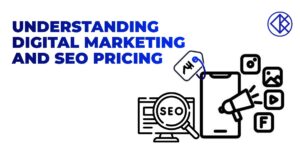
Table of Contents
Introduction- Understand your Audience
- Align Your Landing Page with Your Ad
- Craft a Compelling Headline
- Focus on a Clear Value Proposition
- Optimize Your Call-to-Action (CTA)
- Ensure Mobile-Friendliness
- Improve Page Load Speed
- Use High-Quality Visuals
- Simplify Your Forms
- A/B Test Regularly
- Utilize Social Proof
- Leverage Analytics
- Conclusion
Introduction
In the world of digital marketing, pay-per-click (PPC) advertising is a powerful tool that drives targeted traffic to your website. However, the effectiveness of your PPC campaigns greatly depends on the performance of your landing page. A well-optimized landing page not only improves your PPC results but also enhances user experience and conversion rates. Here are some key strategies to optimize your landing page for better PPC results.
1. Understand Your Audience
Before diving into the technical aspects of optimization, it’s crucial to understand your target audience. Conduct thorough market research to identify your audience’s needs, preferences, and pain points. Knowing what your audience is looking for will help you tailor your landing page content and design to meet their expectations.
Work flow Steps:
- Create detailed buyer personas.
- Use tools like Google Analytics and social media insights to gather data.
- Conduct surveys or interviews with your existing customers.
2. Align Your Landing Page with Your Ad
Consistency between your PPC ad and landing page is essential. If a user clicks on your ad and lands on a page that doesn’t match the ad’s promise, they are likely to leave immediately. Ensure that the message, design, and offer on your landing page reflect the content of your ad.
Work flow Steps:
- Use the same keywords in both your ad and landing page.
- Match the visual elements (like colors and images) between your ad and landing page.
- Clearly deliver on the promise made in your ad.
3. Craft a Compelling Headline
The headline is the first thing visitors see when they land on your page. It should grab their attention and make them want to stay and learn more. A compelling headline is clear, concise, and directly related to the ad they clicked on.
Work flow Steps:
- Use strong, action-oriented language.
- Highlight the main benefit or solution your offer provides.
- Keep it short and to the point (ideally under 10 words).
4. Focus on a Clear Value Proposition
Your value proposition explains why your offer is valuable and why visitors should choose your product or service over competitors. It should be prominently displayed on your landing page and clearly communicate the benefits.
Work flow Steps:
- Identify your unique selling points (USPs).
- Use bullet points to list key benefits.
- Include testimonials or social proof to build credibility.
5. Optimize Your Call-to-Action (CTA)
A strong call-to-action is crucial for converting visitors. Your CTA should be clear, compelling, and easy to find. It should tell visitors exactly what you want them to do next, whether it’s downloading a resource, signing up for a newsletter, or making a purchase.
Work flow Steps:
- Use action verbs like “Get,” “Download,” “Sign Up,” or “Buy.”
- Make your CTA button stand out with contrasting colors.
- Place your CTA above the fold and repeat it throughout the page.
6. Ensure Mobile-Friendliness
With the increasing use of mobile devices, it’s essential that your landing page is mobile-friendly. A responsive design ensures that your page looks and functions well on all devices, providing a seamless experience for all users.
Action Steps:
- Use a responsive design that adjusts to different screen sizes.
- Test your landing page on various devices and browsers.
- Keep your design simple and avoid clutter that can slow down load times.
7. Improve Page Load Speed
Page load speed is a critical factor in user experience and SEO. A slow-loading page can increase bounce rates and reduce conversions. Ensure that your landing page loads quickly to keep visitors engaged.
Work flow Steps:
- Compress images and use appropriate file formats.
- Minimize the use of heavy scripts and plugins.
- Use a reliable hosting service and consider a content delivery network (CDN).
8. Use High-Quality Visuals
Visual elements like images, videos, and graphics can enhance the appeal of your landing page and help convey your message more effectively. However, they should be relevant and high-quality to avoid distracting or annoying your visitors.
Work flow Steps:
- Use professional, high-resolution images.
- Incorporate videos to explain complex information or demonstrate products.
- Use visuals to break up text and make the page more engaging.
9. Simplify Your Forms
If your landing page includes a form, keep it as simple as possible. Long and complicated forms can deter visitors from completing them. Ask for only the most essential information to reduce friction and increase conversions.
Work flow Steps:
- Limit the number of fields to only what’s necessary.
- Use clear labels and error messages.
- Consider using a multi-step form to make it less daunting.
10. A/B Test Regularly
A/B testing (or split testing) is a powerful method to determine which elements of your landing page are working and which are not. By testing different versions of your page, you can make data-driven decisions to optimize performance.
Work flow Steps:
- Test one element at a time (e.g., headline, CTA, images).
- Use tools like Google Optimize, Optimizely, or Unbounce for A/B testing.
- Analyze the results and implement the changes that yield better performance.
11. Utilize Social Proof
Social proof, such as customer testimonials, reviews, and case studies, can build trust and credibility with your visitors. Showcasing real experiences from satisfied customers can reassure new visitors and encourage them to convert.
Work flow Steps:
- Include testimonials with customer photos and names.
- Display logos of well-known clients or partners.
- Share case studies that highlight successful outcomes.
12. Leverage Analytics
Regularly monitor and analyze the performance of your landing page using analytics tools. This will help you identify areas of improvement and measure the effectiveness of your optimization efforts.
Work flow Steps:
- Set up goal tracking in Google Analytics.
- Monitor key metrics like bounce rate, conversion rate, and average session duration.
- Use heatmaps and session recordings to understand user behavior.
Conclusion
Optimizing your landing page is an ongoing process that requires constant testing and tweaking. By implementing these strategies, you can enhance user experience, reduce bounce rates, and significantly improve your PPC results. Remember, a well-optimized landing page not only attracts more clicks but also converts those clicks into valuable leads or sales, ultimately driving the success of your digital marketing efforts.
About Kerplunk Media: Kerplunk Media specializes in digital marketing strategies that elevate brands and drive growth. With a focus on innovative solutions and personalized service. We’re productively provide a Website Development ,Digital Marketing,Video Production,Social Media Marketing and Branding. Check our website https://www.kerplunkmedia.com/ and https://kerplunkmediachennai.com/.we help businesses navigate the digital landscape and achieve their marketing goals. Connect with us to learn more about how we can help your business succeed on LinkedIn and beyond.





